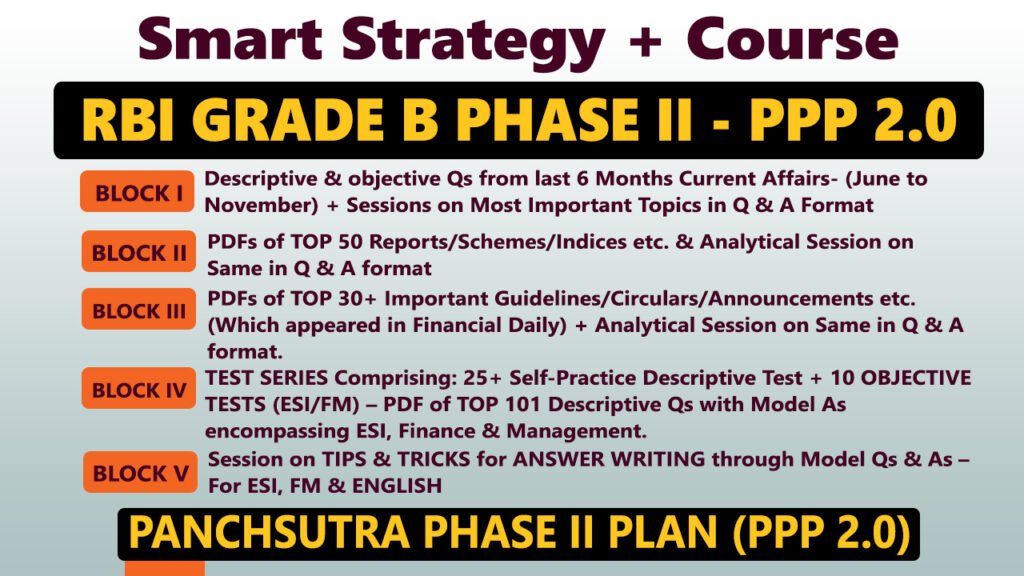
Origin
- The origin of “open market operations” can be traced back to the practice of central banks, like the Federal Reserve, buying and selling government securities in the open market to manage the money supply within an economy, with the earliest implementations focusing on trading “real bills” (commercial paper) to address temporary liquidity needs among banks, rather than directly handling Treasury securities; this practice gradually evolved into the more established “open market operations” we know today.
About
- Open Market Operations (OMO) are one of the most effective monetary policy tools used by central banks worldwide, such as the Federal Reserve (USA), Reserve Bank of India (RBI), European Central Bank (ECB), and Bank of Japan (BOJ). OMO helps control money supply, inflation, liquidity, and interest rates in an economy.
What are Open Market Operations?
- Open Market Operations refer to the buying and selling of government securities (bonds, treasury bills, etc.) by a country’s central bank in the open market. This influences the availability of money and credit in the economy.
How OMO Works?
When the central bank BUYS government securities:
- It injects money into the banking system.
- This increases liquidity, lowers interest rates, and stimulates economic activity.
When the central bank SELLS government securities:
- It absorbs excess money from the economy.
- This reduces liquidity, raises interest rates, and controls inflation.
OMO is a crucial tool for maintaining economic stability and ensuring sustainable growth.
Objectives of Open Market Operations
- Control Inflation
- Reduces excessive liquidity to keep inflation in check.
- Ensure Financial Stability
- Prevents liquidity shortages or excesses in banks.
- Regulate Interest Rates
- Adjusts borrowing and lending costs for businesses and consumers.
- Support Economic Growth
- Provides sufficient funds to the economy when needed.
- Manage Exchange Rates
- Controls the value of domestic currency by adjusting money supply.
Types of Open Market Operations
Central banks conduct OMO in two primary ways:
A. Permanent Open Market Operations
- Used for long-term liquidity management.
- Central banks permanently buy or sell government bonds.
- Example: Quantitative Easing (QE) by the US Federal Reserve during financial crises.
B. Temporary Open Market Operations
- Used for short-term liquidity adjustments.
- Conducted through Repurchase Agreements (Repo) and Reverse Repo transactions.
1. Repo (Repurchase Agreement) – Injecting Liquidity
- The central bank buys securities from commercial banks with an agreement to sell them back later.
- Effect: Increases money supply, lowers interest rates, boosts economic activity.
2. Reverse Repo – Absorbing Liquidity
- The central bank sells securities to banks with an agreement to buy them back later.
- Effect:
- Reduces money supply, increases interest rates, controls inflation.
Impact of Open Market Operations
A. On Inflation & Deflation
- To control high inflation:
- The central bank sells bonds to absorb excess liquidity.
- To tackle deflation:
- The central bank buys bonds to inject liquidity and encourage spending.
B. On Interest Rates & Borrowing Costs
Buying bonds → Lowers interest rates → Encourages borrowing & investment.
Selling bonds → Raises interest rates → Reduces borrowing & spending.
C. On Stock Markets & Investments
More liquidity → Stock prices rise as investors have more funds.
Less liquidity → Stock prices fall due to tightening money supply.
D. On Banking System & Credit Availability
OMO helps regulate cash flow in banks, ensuring stability in credit markets.
Open Market Operations in Major Economies
A. United States – Federal Reserve (Fed)
- The Federal Open Market Committee (FOMC) conducts OMO to regulate the US money supply.
- Example:
- Quantitative Easing (QE) in 2008
- The Fed purchased bonds to boost liquidity during the financial crisis.
- Quantitative Easing (QE) in 2008
B. India – Reserve Bank of India (RBI)
- RBI conducts OMO through Repo & Reverse Repo operations.
- Example:
- COVID-19 Pandemic (2020-21)
- RBI used OMO to inject liquidity into the banking system.
- COVID-19 Pandemic (2020-21)
C. European Union – European Central Bank (ECB)
- ECB uses OMO to stabilize the eurozone economy and regulate inflation.
Advantages of Open Market Operations
- Flexible & Quick Implementation
- Can be conducted anytime to respond to economic needs.
- Direct Impact on Liquidity
- Precise control over money supply.
- Influences Interest Rates & Inflation
- Helps stabilize prices and borrowing costs.
- Encourages Economic Growth
- Can stimulate investment and employment.
- Non-Disruptive
- Unlike reserve ratio changes, OMO does not directly impact banking operations.
Challenges & Limitations of Open Market Operations
- Limited Effectiveness in a Liquidity Trap
- When interest rates are near zero, OMO has minimal impact.
- Market Distortions
- Excessive OMO can create asset bubbles in stock or real estate markets.
- Dependency on Financial Institutions
- Success depends on how banks respond to OMO.
- Risk of Inflation
- Injecting too much liquidity can lead to inflationary pressures.
- Global Spillovers
- OMO in major economies (e.g., the US) can affect global capital flows.
Recent Trends in Open Market Operations
- Post-COVID OMO:
- Central banks worldwide conducted aggressive bond-buying programs to support economies.
- Tapering & Liquidity Withdrawal:
- Fed and ECB are now reducing liquidity to combat inflation.
- Digitalization of OMO:
- Some central banks are exploring blockchain for transparent bond trading.
Conclusion
- Open Market Operations are a powerful monetary policy tool used by central banks to regulate liquidity, control inflation, and stabilize economies.
- While they offer quick and flexible solutions, their effectiveness depends on market conditions and policy execution.
Governments must strike a balance between liquidity support and inflation control to ensure sustainable economic growth.



















